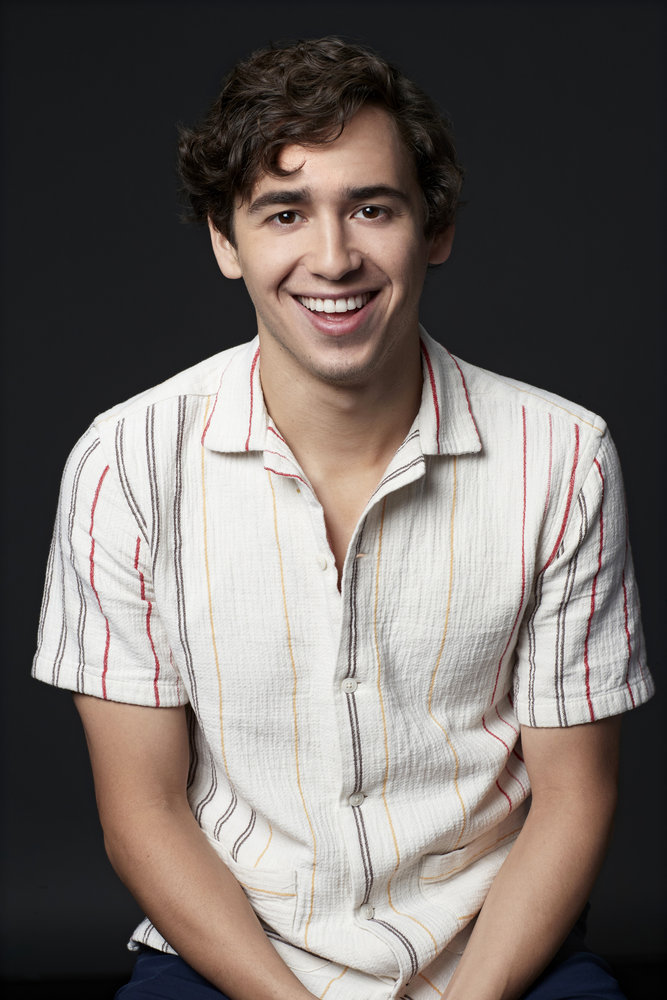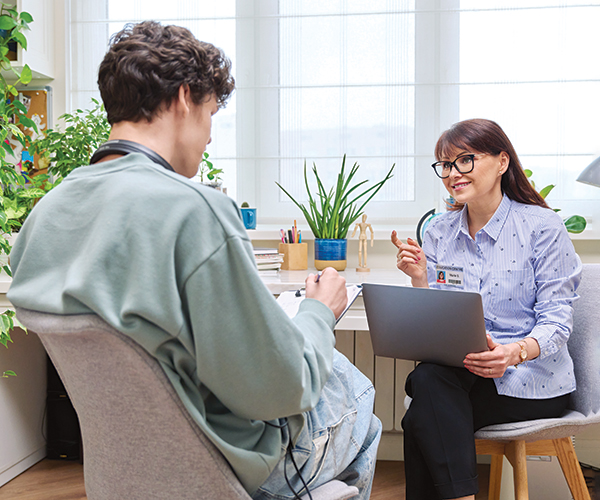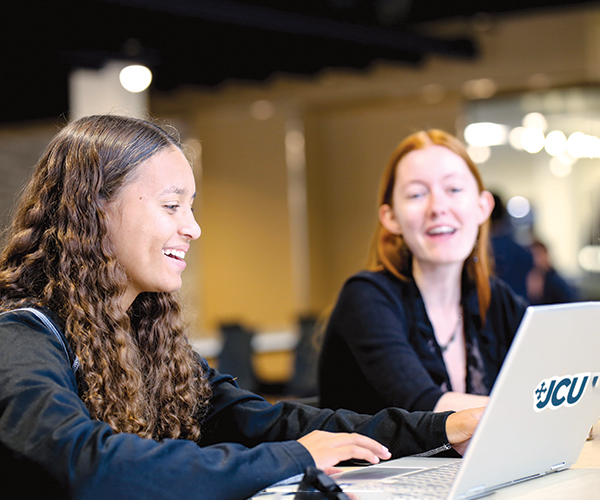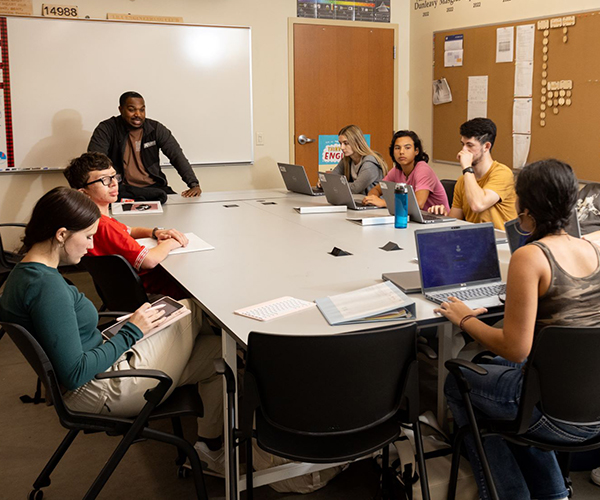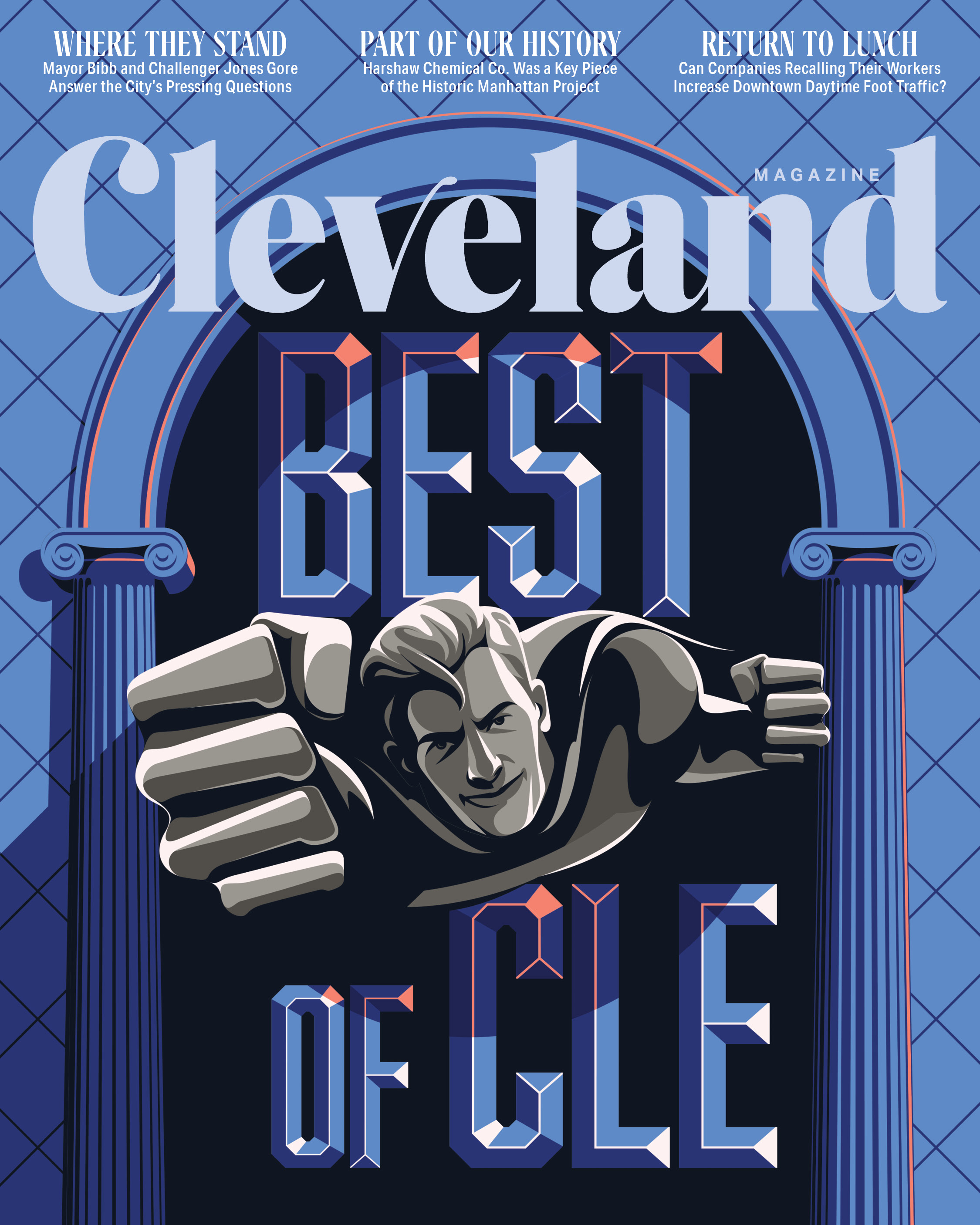Cleveland Private Schools Put Students in Real Work Situations For Faster Learning
by Kristen Hampshire | Sep. 9, 2024 | 9:00 AM

Maxwell Carfagna, 10, wanted to make sure his golf game was accurate — plus, prevent others on the course from cheating when measuring a shot’s distance. After three years in University School’s entrepreneur club, with weekly meetings to imagine, tinker, prototype, test and try again, he looks at life’s problems (including the bother of drying off after a shower) with an innovator’s perspective.
“How can I fix it?”
The solution: a golf cart equipped with a control panel and circuitry that he created himself. It connects to a sensor-activated camera. Golf balls bear QR codes. Swing, ding, land, capture the stats; that’s how it goes.
Carfagna was runner-up in the school’s annual Boyce Award for Student Innovation for this prototype of a tricked-out buggy. “With the first project, my 3D printer wasn’t working because the filament wouldn’t load correctly,” he says. “I made a feeder so it would not get stuck.”
The shower fan was year two. Towelling off can be labor intensive, Carfagna points out. He designed a prototype of a pint-sized blower that suctions to the shower wall, so once he’s clean and the spigot is off, on goes the fan and out with the towel.
“He likes to create useful things and keep himself busy — he’s very handy,” says his mother, Joanna Carfagna.
Learning by doing, unstructured tinkering along with reteaching the steps to someone else, cements complicated concepts. According to a study by the National Training Laboratories Institute, students retain 75% of what they learn when they practice it, and 90% when they teach someone else and repeat the process immediately.
“You remember concepts a whole lot better when you’ve had to do them and not just read about it,” says Jessica Dragar, senior manager of outreach and engagement for University School and the Young Entrepreneur Institute.
For many students, hands-on experiences fuel classroom academics.
“We have boys who might have been looking out the window, wondering what else was happening, not completely focused — then their eyes hit you with, ‘I heard what you said and that is what I want to do!’” Dragar says. “When you see that light bulb click, and all of a sudden they get it and realize they are capable of doing so much more than they ever imagined, it’s wonderful to watch.”
Bringing a Business Plan to Life
In a course that feels like a truncated MBA program, Mati Barker’s students compete in a food truck competition that involves concepting, menu creation, marketing, graphics and a business plan. “This class gets the wheels turning,” says Barker, the director of the Institute for Business & Entrepreneurship at Lake Ridge Academy.
As juniors and seniors, students engage with a choice of three capstone projects. One is an industry survey examining challenges and opportunities. Another is a business examination deep dive. And lastly, an executive summary. All include assisting with two new stores that opened on campus this fall. One is a cafe selling the usual coffee shop fare. The other is a swag stop offering spirit wear.
The on-site businesses hatched in 2022. Students were involved in every phase of the planning. A board member overseeing
construction gave kids a behind-the-scenes tour of the work in progress.
“They walked through the schematics, how to read architectural plans, how to work with contractors and make sure they follow through with requirements — how to have difficult conversations between construction companies and third-party vendors,” Barker says.
The owner of Slow Train Coffee in Oberlin was instrumental in the project, Barker says of menu design and vendor sourcing. “We gave the students a ground-up buildup to the opening,” she says.
At first, the cafe will be open during drop-off, lunch periods and while the class meets as they rotate “on the clock.” Barker says they’re starting small with basic drinks and plan to add frozen drinks — plumbing was arranged in the plans.
“The idea is, as it grows and each new class of students comes through, they have an opportunity to expand and grow the businesses to leave their stamp on it,” Barker says.
Real Lab Learning
A deer-in-headlights look is how Neena Goel describes students’ first days in a graduate-level or professional research lab as participants of Gilmour Academy’s Catalyst Program. They are tossed into the middle of a scientific project without any sort of debriefing.
The initial culture shock and information overload is a good thing, Goel says. “The outcome is that students learn to understand what they observe and have to find out how and why on their own,” she says of the inquiry-based program that takes students out of their comfort zones and inspires critical thinking and independent study.
“Students find out that science is not a linear process,” Goel adds, speaking of its trial-and-error nature.
Ed and Tanisha Long’s daughter, Kendall, completed a Catalyst experience at Case Western Reserve University, following her interest in genetics after she took a science class in middle school where she learned to construct and deconstruct DNA and RNA, which store and read genetic information in cells.
Kendall realized after the lab project that genetics is her jam. Now, she is at Howard University studying biology with a minor in chemistry. “The program propelled her toward greater success in college to be involved in a highly selective program,” says Tanisha Jackson-Long.
Jackson-Long is a teacher at Cleveland Municipal School District and focuses on entrepreneurship and skills-based training. She says of the hands-on learning advantage, “We understand and remember by applying what we learn. This type of program takes classroom projects into a real-world experience where Kendall was in a lab getting actual outcomes.”
Engineering Solutions
“One of the hardest things for our young ladies is throwing away something they worked on,” says Saint Joseph Academy science teacher Bryce Ormiston. But “back to the drawing board” is a way of life they’re learning to manage.
Ormiston was a practicing engineer for 13 years before joining St. Joseph’s staff. “I really try to reinforce, I teach a skill, and it’s the students’ job to teach the next person, and we do that right from the start,” he says. “Then, you establish a natural collaboration, which is super important in engineering.”
An all-together brain dump and problem-solving mindset is not just an essential engineering skill, it’s a skill for life. Related to engineering, Ormiston says, “Everything is collaboration.”
Slipping feet into all those shoes in an immersive lab experience changes perspectives.
The younger you learn to fail and regroup, the better, Ormiston says. This summer, he ran a camp in the makerspace with sixth to eighth graders. Fifteen students tinker around the lab, doing their thing. Ormiston jokes, “Guess how much I have to do? Pretty much nothing. They learned to be confident and know if a 3D printout didn’t work, they don’t come back to ask me, ‘What should I change?’ They just try something else.”
Parents Matt Heisey and Julie Trott-Heisey speak of the experience their daughter, Celia, had in delving into her love of graphic design and innovation combined with making-by-hand. She constructed a
whiteboard-sized version of Lite-Brite as a creative learning tool to give to the school, figuring out its capabilities to be expandable and adaptable.
Trial, error, admitted frustration and unhinged trying resulted in a hands-on masterpiece that will leave a legacy at the school. Julie says access to programs like the school’s makerspace, along with rowing in crew, “have allowed her to become a very independent, hardworking woman.”
The leg up during college application and tour time was tangible. Celia is now a freshman at Syracuse University.
“When we were touring the industrial design building, we ran into the coordinator of the makerspace and he invited us to tour the lab,” Matt says. “It was so amazing to witness from a parent perspective. He was impressed that she had all the hands-on learning experience coming out of her high school career.”
Student-generated activity stations designed to test child development concepts taught in the classroom give Russell’s advanced placement psych group an eye-opening perspective. “Students design interactive, fun activities that test where kindergarten and first graders are developmentally,” she explains of the upper-lower school collaboration.
Testing Theories.
The concept of convservatin is a classic milestone when kids move from kindergarten to first grade, Russel says. Students set up activities to see how young learners grasp the concept. “We might have two glasses of water — one that is tall, one that is short and squat,” she says. “We pour the same amount of water in each glass. If kids have achieved an understanding of conservation, they will say it’s the same amount of water. If not, they generally say the taller glass has more water.”
Teaching the Task.
Sometimes the best way to learn is by doing. That’s why Lake Ridge Academy’s advanced placement students guide younger pupils through the activities. The program also helps the students build communication skills. “They are giving instructions, helping if a task gets difficult, offering suggestions and also collecting data,” she says.
Gathering Feedback. Projects like the student-generated activity stations keep teaching fresh, says Russell, who is intentional about soliciting suggestions from students to keep them engaged. “My students do goal setting at the beginning of units and at the end, I ask, ‘What is something you or I could do to help you master the skill better?’” she relates. “This gives me a chance to take into account changes that would benefit all students.”
The Longs had an eye on Gilmour Academy’s Catalyst Program since their daughter, Kendall, was in middle school. “She always picked up on science, and we wanted to make sure she had opportunities to explore careers,” says Ed. Kendall landed in a Case Western Reserve University lab working on genetics research. “As a parent, it was amazing to watch her grow and develop and have all the supports right there,” he says. Tanisha adds, “They are learning to become students for life.”
Speaking Up.
Reviewing research results, tweaking experiments, writing journal notes — all of the analysis that this program offered helped develop a maturity in the way Kendall can now communicate with professors and professionals, the Longs say.
Failing isn’t an ‘F.’
Students feel a lot of pressure to be sucessful, which is why this program teaches them how to fail. “In this day and age, getting students to understand that it’s OK to fail and to keep trying is very difficult to teach,” says Tanisha. “But what the program does for those students who are ready to embark on deeper learning through self-actualization is they grow, find their voice and find a path.”
Growing Knowledge.
With early lab experience, Kendall has become “seasoned” as only a sophomore at Howard University, where she is building layers of real-world research. “The program propelled her for greater success and she is now able to approach projects on an even deeper level,” Tanisha says.
Now an industrial design major at Syracuse University, Celia Heisey discovered a career passion at the intersection of design and build in the makerspace at Saint Joseph, where she took engineering courses and an independent study to hone life and lab skills.
A Project with Purpose. Saint Joseph collaborates with occupational therapists and community organizations to learn what projects might help their causes. In this case, Heisey made a cool school tool that can be expanded upon and inspired additional maker space projects, including lightboard templates the following engineering class made to complement it. “It was really cool to leave my mark on the school, and even though I’m not there anymore, the project is and students are really enjoying it,” Celia says.
Owning It.
An independent study during which Heisey designed, prototyped and constructed an expansive Lite-Brite panel began with really no boundaries. “At some points, that was daunting,” she admits. “It was all on me and what I made of it, so I had to develop the criteria and test different concepts. That really helped set me up for college.”
Learning by Doing.
It wasn’t success but trial by error that helped Heisey gain confidence in the makerspace. “At first, I ran into a lot of problems using the different machines in our makerspace,” Heisey relates. “So, I was learning as I went along, figuring out how to size pegs made out of acrylic rods in different dimensions,” Heisey relates.
For more updates about Cleveland, sign up for our Cleveland Magazine Daily newsletter, delivered to your inbox six times a week.
Cleveland Magazine is also available in print, publishing 12 times a year with immersive features, helpful guides and beautiful photography and design.
Trending
-
1
-
2
-
3
-
4
-
5





